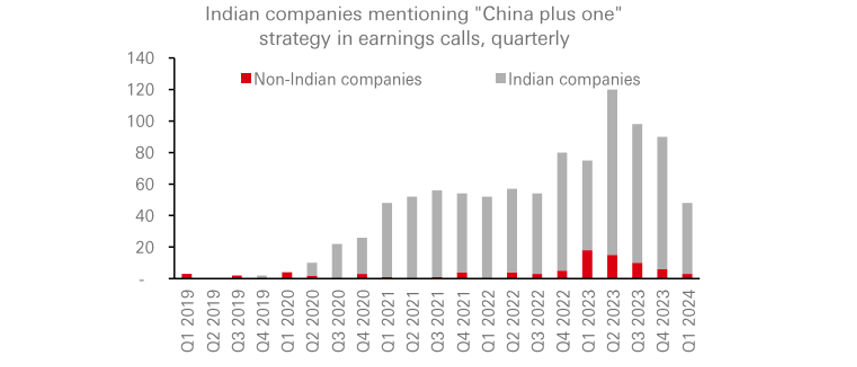Forget trade tariffs…
India’s Strategic Ascent in the Global Economy
The global economy in 2025, now valued at US$106.5 trillion, remains deeply interconnected through trade, finance, and technology. Yet beneath the surface of cyclical shifts and geopolitical noise, a structural transformation is underway, one where India’s rise from the periphery to a core pillar of global trade is reshaping how capital is being deployed.

India’s GDP of US$4.2 trillion, representing 4% of global output, makes it the world’s fifth-largest economy, trailing only the U.S., China, Germany, and Japan. But the country’s real significance lies not just in size, but in trajectory: it’s emerging as the fastest-growing large economy, underpinned by demographic strength, digital infrastructure, and global supply chain realignment.
From Services Powerhouse to Global Trade Integrator
India’s economic evolution has diverged sharply from the Western industrial template. Unlike the agriculture-to-industry-to-services progression that is typical of developed economies, India leapfrogged directly from agriculture to services, a structural pivot that has now become its competitive advantage.
Services command 55% of Gross Value Added (GVA), far exceeding industry (27%) and agriculture (18%). The shift has been powered by a combination of human capital and digital infrastructure.
With millions of English-speaking, tech-literate graduates entering the workforce annually, India has become a global hub for IT, business process outsourcing, healthcare, and financial services.
Over 1,580 Global Capability Centres (GCCs) operate from India, running high-value functions such as analytics, R&D, and finance for multinational corporations.
The New Trade Reality
Global trade in goods and services now totals US$32.5 trillion annually, expanding even through tariff disruptions and “deglobalisation” rhetoric. As Western economies recalibrate supply chains amid geopolitical fragmentation, India has become a preferred alternative to China as an export hub, offering cost competitiveness and a stable policy environment.

India’s policy architecture, anchored by initiatives such as the Production Linked Incentive (PLI) schemes, Digital India, and Make in India, is increasingly translating into tangible economic outcomes. These reforms are catalysing a new phase of industrial acceleration, driving deeper manufacturing localisation, technological upgrading, and diversification of export markets. At the corporate front line, industry leaders such as Tata Steel, Mahindra & Mahindra, Samvardhana Motherson, and Aurobindo Pharma exemplify this transformation, leveraging policy tailwinds to expand global competitiveness and supply chain integration.

The Long Game: Investing in this Structural Story
India’s participation in global trade is no longer defined by low-cost outsourcing; it’s now about value creation, innovation, and integration. As supply chains rewire, global demand shifts toward Asia, and digital trade scales, India is positioned not just to benefit from these forces, but to help define them.
Sectors such as electronics, steel, pharmaceuticals, and automotive are rapidly emerging as India’s next generation of export powerhouses. Yet, within the broader equity landscape, these industries still represent a relatively small portion of benchmark indices, which remain heavily weighted towards financials and domestic consumption.
This creates a disconnect – while the incremental growth engines of the economy are shifting towards export-oriented sectors, much of this potential remains underappreciated in current valuations. For investors seeking to capture this evolving structural story, active management offers a distinct advantage: enabling targeted exposure to companies best positioned to benefit from India’s export renaissance, rather than relying on passive strategies dominated by legacy sector weights.
5 topics
1 stock mentioned
%202.jpg)
%202.jpg)